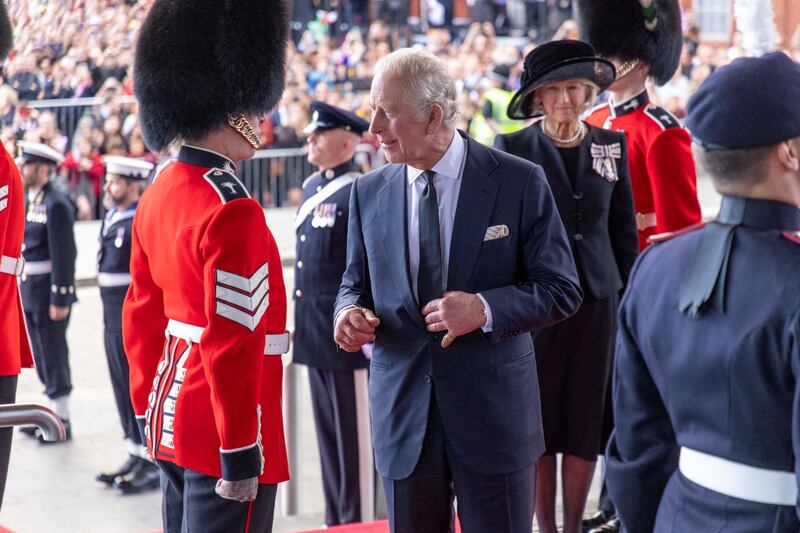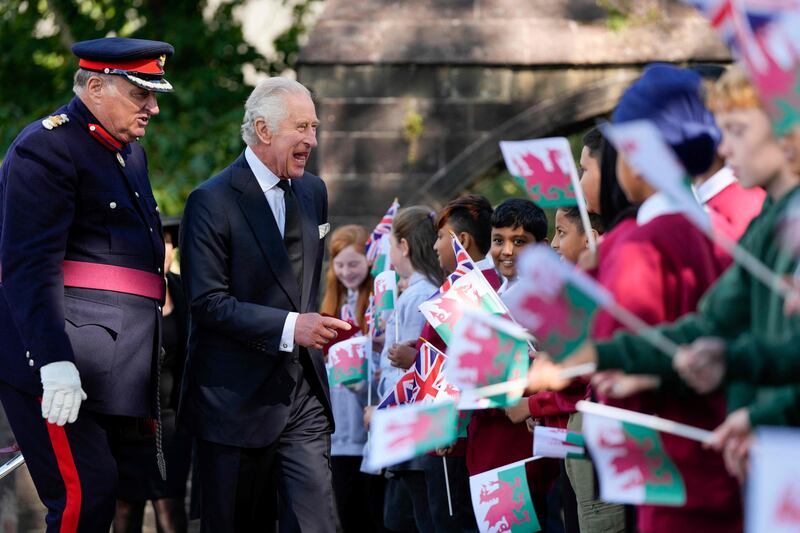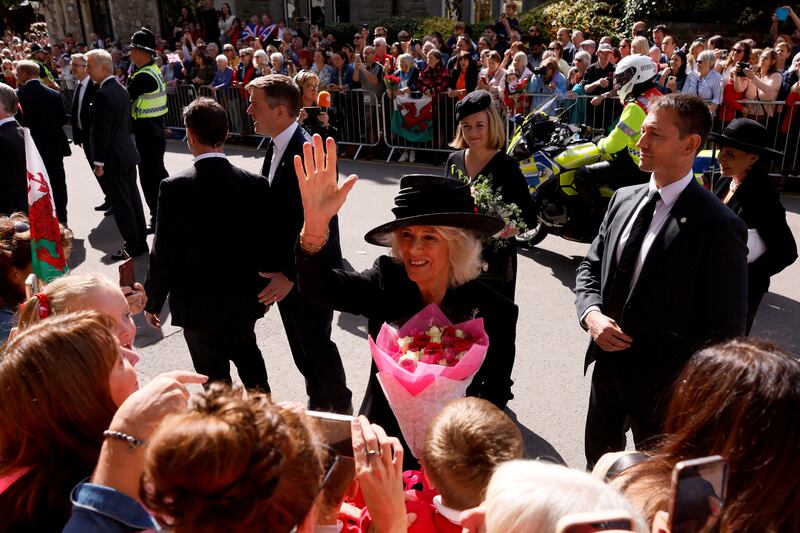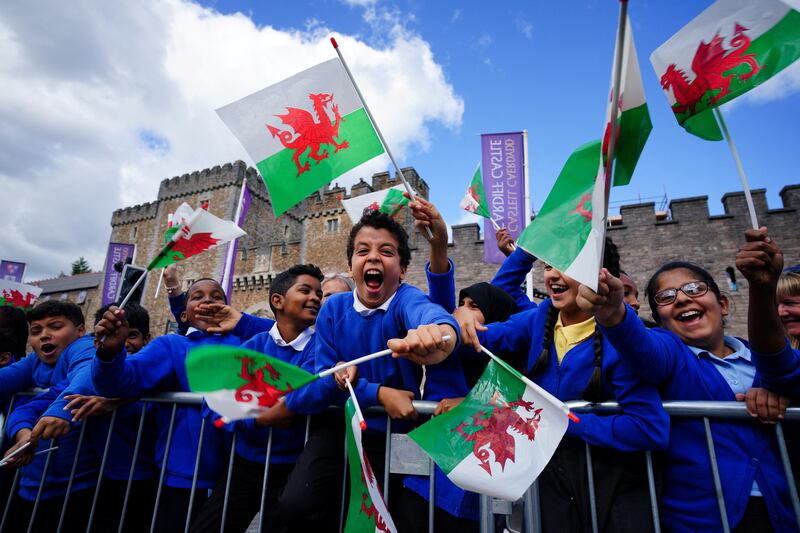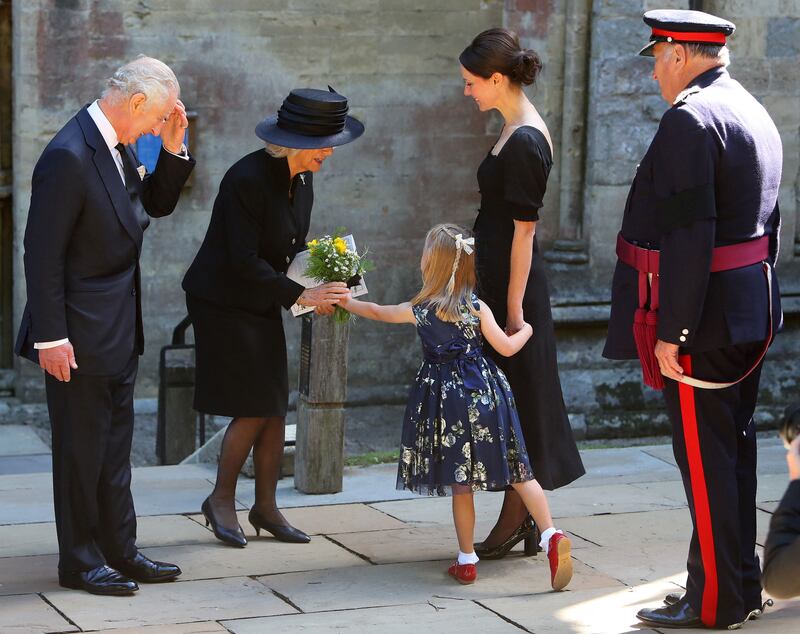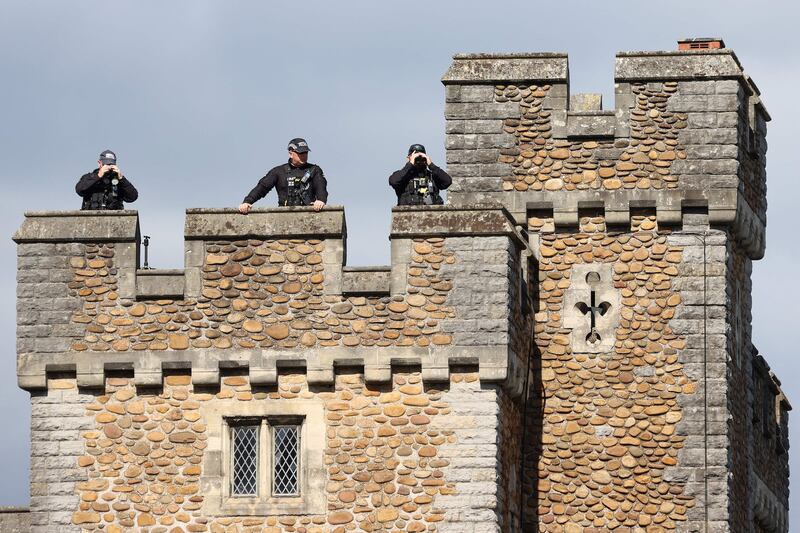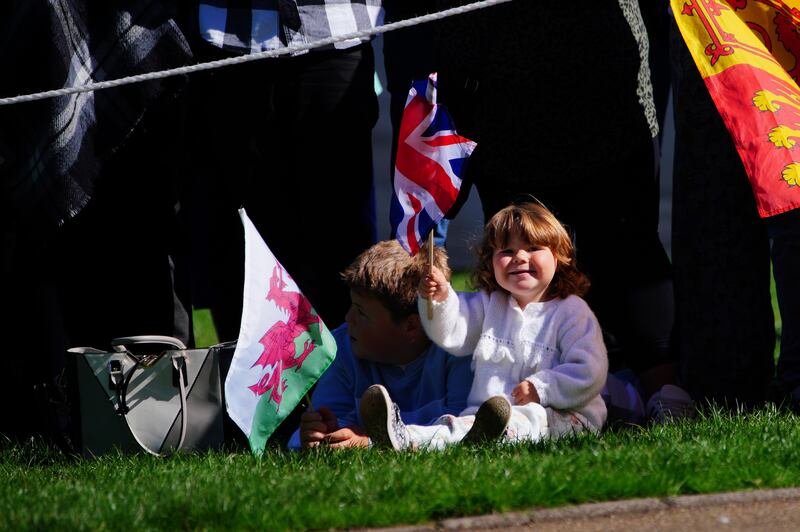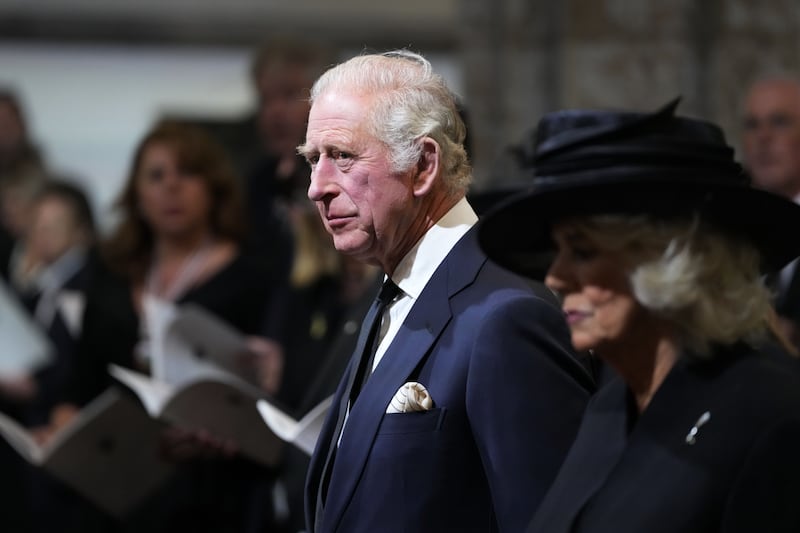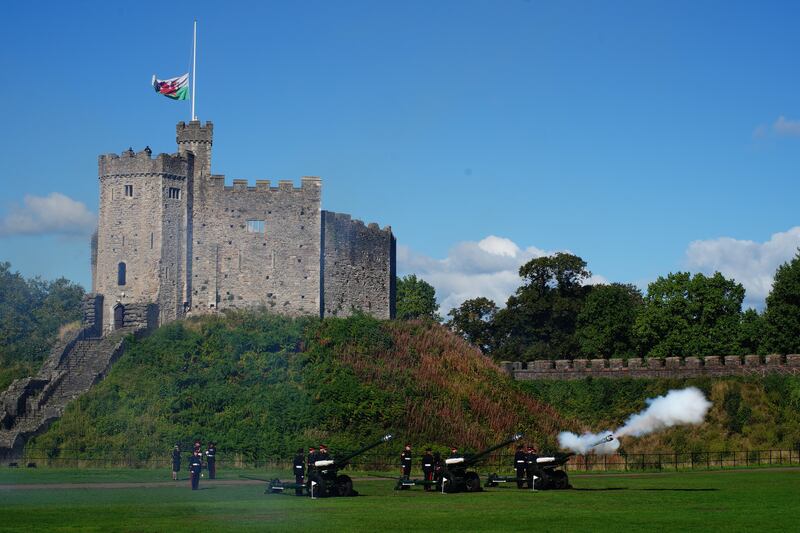Britain's King Charles III visited Wales on Friday for the first time since ascending the throne, before later returning to London where he was expected to hold a vigil by Queen Elizabeth II’s coffin with his siblings.
The king, who was the UK’s longest-serving Prince of Wales, was joined by Queen Consort Camilla on the visit to Cardiff.
"Through all the years of her reign, the land of Wales could not be closer to my mother's heart," the king said.
"I know she took immense pride in your many great achievements, even as she also felt you deeply in great times of sorrow," he added.
"It must surely be counted the greatest achievement to belong to a land that inspired so much devotion.
"I am resolved to honour that same example in the spirit of the words I always try to live my own life - Ich dien - I Serve."
The royal couple attended a remembrance service for Queen Elizabeth II at Llandaff Cathedral and met schoolchildren and members of the local community.
The king wore a black morning suit and the queen consort a black skirt, suit jacket and hat. She also wore a silver leek brooch, a symbol of Wales, which was a gift from Queen Elizabeth II.
The royal couple were introduced to First Minister Mark Drakeford, High Sheriff of South Glamorgan Rosie Moriarty-Simmonds and Welsh Secretary Robert Buckland, as well as other dignitaries and religious leaders.
They were also greeted by more than 40 pupils from five primary schools around Cardiff.
Dexter Garland and Ella Noble, both 10, from St Julian's Primary School in Newport, handed King Charles and the queen a mug each with their own artwork printed on them.
"It is something I will remember for the rest of my life. It was the best experience of my life," Ella said.
Anti-monarchy protesters had planned to hold a silent demonstration at Cardiff Castle.
King Charles was Prince of Wales for more than 53 years after his investiture in 1969 at a ceremony in north Wales.
"It was the big, formal introduction of Charles as this symbol ― if you like ― of Wales," Dr Mari Wiliam, lecturer in modern history at Bangor University told Sky News.
"Opinion polls from the late 1960s show about 70 per cent to 80 per cent approval of Charles being invested as Prince of Wales ― but there were also very vocal protests.
"In Welsh history we tend to focus a lot on the protest against Charles and not so much on how he tried to integrate himself with Wales and Welsh culture," which involved a 10-week course studying Welsh language and history at Aberystwyth University.
The title of Prince of Wales, which has been held by 21 heirs to the throne, dates back to the 13th century, when England conquered the nation.
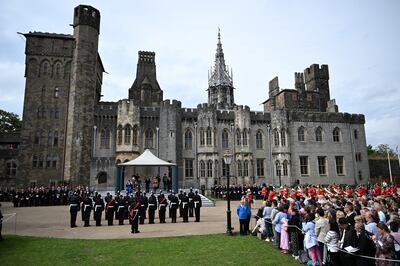
It was a political statement made to emphasise the subjugation of the Welsh by the English monarch and it has therefore been seen by some as a symbol of oppression.
The king’s visit took place on Owain Glyndwr Day, when thousands of people celebrate the life and legacy of the "rebel" Prince of Wales.
Glyndwr, the last native Welshman to hold the title, claimed descent from Llywelyn ap Gruffydd, known as Llywelyn the Last, who was one of the last native and independent princes of Wales before its conquest by England.
Glyndwr was educated partly in England and returned home to Wales to marry, where he lived a comfortable life.
But towards the end of the 14th century, there was growing discontent between the Welsh and the English Crown and Parliament over land disputes.
On September 16, 1400, Glyndwr, who was 50, mobilised a militia of several hundred men in Ruthin and attacked a number of towns in the north-east of the country.
The day marked the start of a 15-year uprising against Henry IV, who was king of England at the time, after which his followers would proclaim him Prince of Wales.
The revolt is considered to be the last Welsh war of independence. Glyndwr has since been viewed as a figurehead of Welsh nationalism and the independence movement.
Later in the day, the king and queen consort will return to London, where the monarch and his three siblings ― Princess Anne, Prince Andrew and Prince Edward ― will hold a family vigil in front of the coffin of Queen Elizabeth II.
The so-called Vigil of the Princes, with all four royals in ceremonial military uniform, will last for 15 minutes from 6.30pm.
Prince Andrew has been granted special dispensation to wear the uniform for the personal gesture.
Princes William and Harry are expected to take part in a similar vigil in honour of the queen on Saturday.
The Prince of Wales and the Duke of Sussex will reportedly join the Queen's six other grandchildren in the special 15-minute vigil at Westminster Hall.
